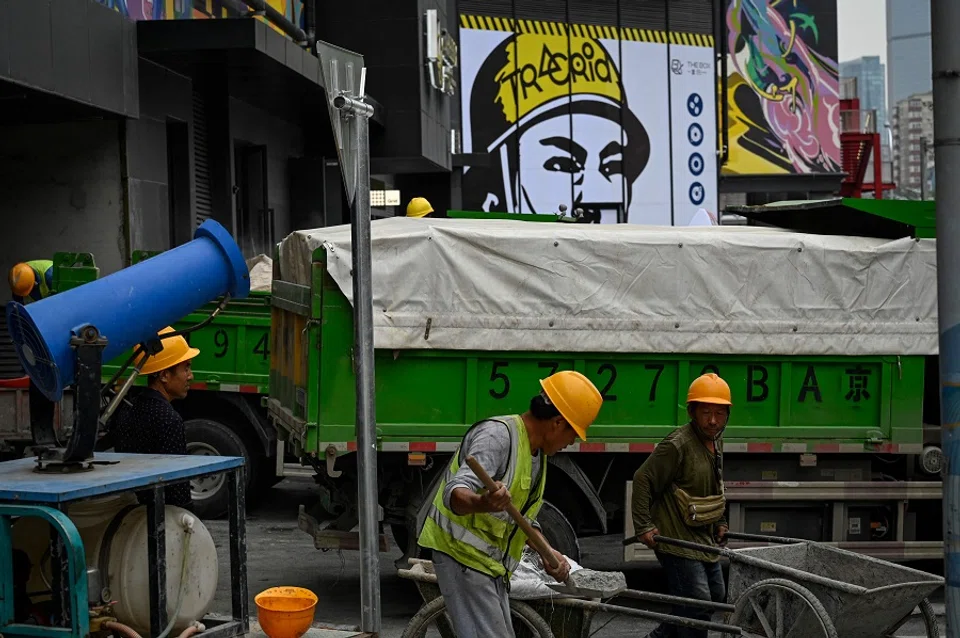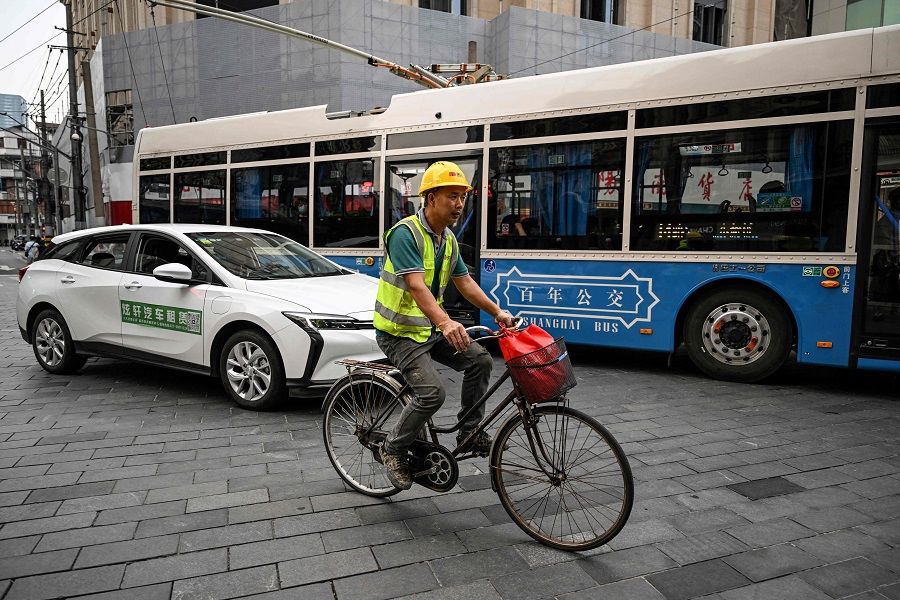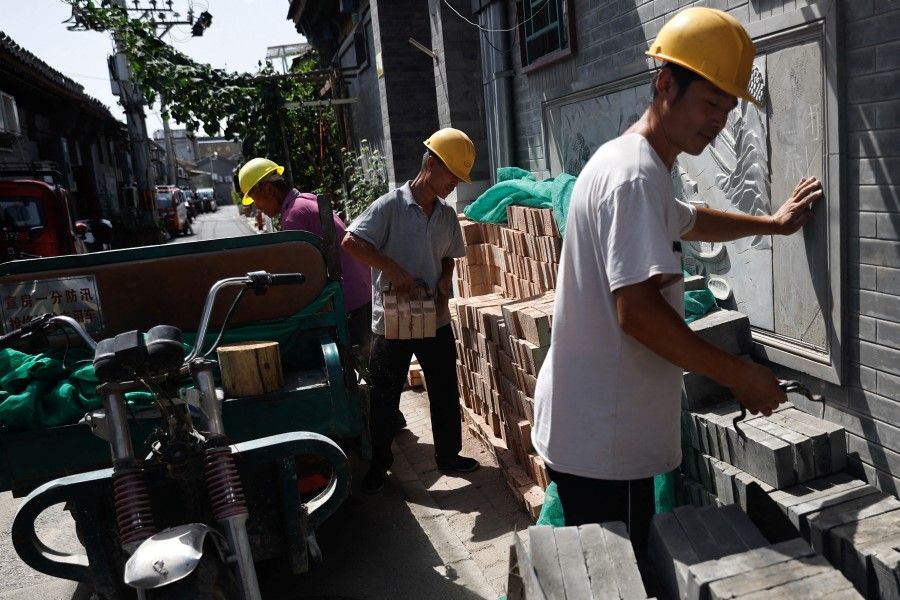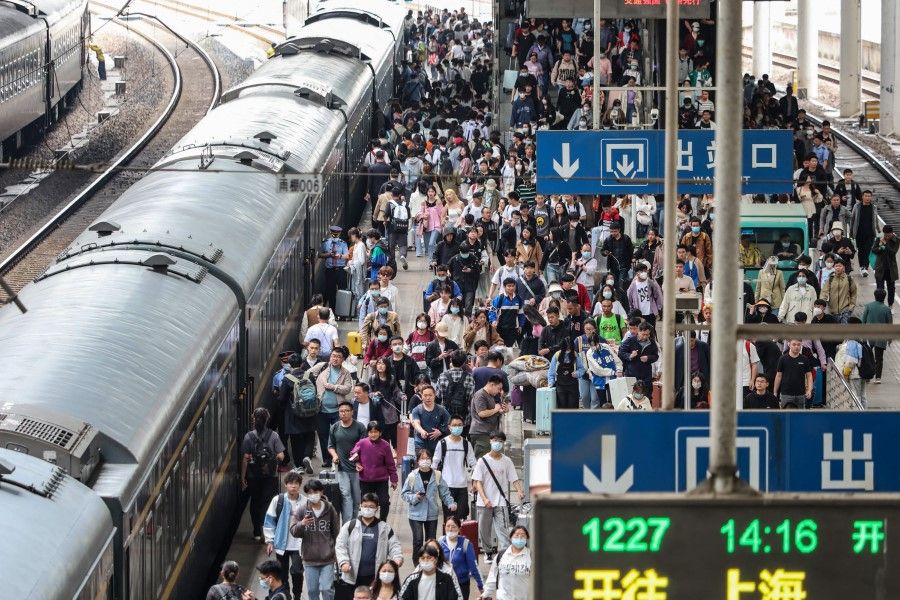Time is running out for China to take care of its ageing migrant workers

Following reform and opening up, China's first-generation of migrant workers who had come to the cities to find work are ageing.
The latest report released by China's National Bureau of Statistics (NBS) in April this year showed that there are about 86.32 million migrant workers over the age of 50 in the country, many of whom are still working. Over the coming decade, this group will be in their sixties.
Who are the first-generation migrant workers?
Recently, an article on a we-media platform has brought back attention to the long-forgotten issue of first-generation migrant workers.
The article began with the story of Zhao, a cleaner at a residential community. Originally from Henan's Zhumadian, Zhao came to Beijing in 2000 and worked various jobs over 23 years, including doorman, green-collar worker and security guard. The 49-year-old does not have enough money to get married and lives alone in a ten square-metre basement with no heating system.
In the future, he will only receive a paltry pension of 100 RMB (US$13.80) a month, and thus plans to work until he reaches 70 years old.
Migrant workers such as Zhao, who were born before the 1970s and had gone to the cities to work around the 1980s and 1990s are known as "first-generation migrant workers".
Unlike the subsequent generations of migrant workers, first-generation migrant workers left their hometowns in search of work because they needed to earn a livelihood to feed their entire family. Thus, they are also known as "livelihood-oriented migrant workers" (生计型农民工).

In April this year, the NBS released a report on the country's migrant worker situation and found that in 2022, 29.2% or 86.32 million of the country's 295.62 million migrant workers are above the age of 50.
Qiu Fengxian, an associate professor at Anhui Normal University's Department of Social Work and Sociology, found in her research that nearly 40% of first-generation migrant workers are employed at construction sites; others are self-employed or work as waiters, security guards and cleaners. Meanwhile, 18.9% are skilled factory workers.
Described as a "portraitist" (画像者) of first-generation migrant workers by Chinese media, Qiu has focused on the group's livelihood since 2015. After interviewing over 200 migrant workers and distributing 2,500 questionnaires, she published her book on the sustainable livelihoods of first-generation migrant workers (《第一代农民工可持续生计研究》) in June.
Qiu believes that the biggest characteristic of this group is that their lives fully reflect the changes of the country and society.
Moving between rural and urban areas
The experiences of the first-generation migrant workers almost coincide with China's process of reform and opening up, concurring with the 30-year period when the country experienced the fastest rate of urbanisation.
But at the same time, they were helpless, unable to maintain continuous and stable work, often moving back and forth between urban and rural areas.
In the mid-1990s, urban economic reforms and ownership system reforms (股份制改革) brought about a wave of layoffs. Some cities again restricted employers from hiring migrant workers to guarantee the re-employment of laid-off workers.

Speaking at an YiXi (一席) talk in May, Qiu introduced the various stages that affect the movement of first-generation migrant workers into the cities.
After China implemented the Household Registration System (hukou) in 1958, citizens were divided into those with urban or rural hukou status. Tied down by the hukou system, rural farmers were unable to work in the cities. After reform and opening up, a rural land contracting system was put in place that gradually allowed farmers to move to the cities to work and do business.
With the influx of people into the cities, city management and order became a problem. So, Chinese officials introduced policies to alleviate the situation by restricting the movement of migrant workers to urban areas.
By 1992, as a result of the farmers' meagre income, the government reopened the doors to the cities, encouraging, guiding and implementing orderly migration under macro control. This led to two consecutive years of massive rural-urban migrations in 1993 and 1994.
In the mid-1990s, urban economic reforms and ownership system reforms (股份制改革) brought about a wave of layoffs. Some cities again restricted employers from hiring migrant workers to guarantee the re-employment of laid-off workers.

Qiu described first-generation migrant workers' back-and-forth movement between rural and urban areas as them having to immediately head back home whenever something happened in the city - when the city catches a cold, they are the first to take medicine.
Many migrant workers choose not to return to their hometowns for minor injuries, for fear of the travel expenses and loss of earning opportunities.
Predicament of first-generation migrant workers
Qiu listed some of the major challenges faced by the first-generation migrant workers in her book.
First, health issues. The majority of first-generation migrant workers are employed in labour-intensive, high-risk, high-pollutant exposure and low-paying jobs. This means that the more they work, the more likely they are to be injured or fall sick.
Despite injuries and ailments, 61.4% consider themselves "physically healthy"; 63.4% have never sought medical treatment in the city where they work; and 58.5% choose to bear with it as much as possible.
Many migrant workers choose not to return to their hometowns for minor injuries, for fear of the travel expenses and loss of earning opportunities. Meanwhile, seeking medical care in hospitals in big cities makes them even more anxious, as they worry that their meagre wages will not be enough to cover the medical expenses.
First-generation migrant workers also have no savings; whatever limited savings they have are spent on their children's education, housing and weddings.

The new rural cooperative medical insurance scheme for farmers is locally managed and disbursed and linked to their hukou, and so it is not suitable for highly mobile migrant workers.
First-generation migrant workers also have no savings; whatever limited savings they have are spent on their children's education, housing and weddings.
According to Qiu's survey, 15.2% of first-generation migrant workers have never saved a cent, and 55.2% have savings below 50,000 RMB.
The lack of savings has also led to issues concerning the retirement of the first-generation migrant workers. In response to a question in Qiu's survey on when they would stop working, 76.1% of the first-generation migrant workers said that they would not retire at 60 years old, and 60.7% answered, "Work until I can't work any more".
While over 60% of first-generation migrant workers have joined the new rural social pension insurance programme, its actual benefits amount to only a few hundred RMB or even less due to the low contribution rates.

In order to quickly accumulate savings, they have flocked to construction sites with higher wages. However, since 2019, the construction industry has issued "retirement orders" for overaged migrant workers, effectively excluding those over the age of 60 from employment.
Where does the future lie for first-generation migrant workers?
Besides the academic circles, the Chinese media and government have long been aware of issues plaguing the first-generation migrant workers.
In 2009, Southern Weekly reported on how 14 workers with silicosis (a lung disease caused by inhaling large amounts of crystalline silica dust, usually over many years) in Wanzhou, Chongqing, fought for their rights, seven of whom died during their pursuit of justice.

In 2016, state media People's Daily wrote about the difficulties faced by migrant workers in seeking reimbursement for medical expenses incurred in their work locations and the lack of regular medical check-ups. In March 2022, the Workers' Daily published an article titled "Retirement Orders in the Construction Industry: Where Do Overaged Migrant Workers Go" which discussed the impact of retirement orders on the overaged migrant workers.
In November 2022, five departments including China's Ministry of Human Resources and Social Security and the National Development and Reform Commission issued a document with views on supporting the employment and entrepreneurship of migrant workers, proposing support for the employment of older migrant workers.
In 2022, the Workers' Daily also suggested two routes for first-generation migrant workers: taking new jobs locally, or returning to their hometowns to participate in rural revitalisation.
In an interview with Chengdu Economic Daily in May this year, Qiu also suggested that when first-generation migrant workers return to their hometowns, they should be given "livelihood opportunities", which entails continuing to work in the countryside for another ten years from the age of 60 to 70 as they prepare for their retirement.
Land that previously required dozens of people to cultivate can now be done by one. In the context of rural decline, returning migrant workers may be left behind again.

The question is whether there are enough job opportunities in rural areas. Land that previously required dozens of people to cultivate can now be done by one. In the context of rural decline, returning migrant workers may be left behind again.
On 6 July, veteran media figure Hu Xijin posted on Weibo: "I think the only solution is to continue to promote rapid economic growth and adjust fairness and justice during this process. There is no other way."
At the end of her report, Qiu summarised the difficulties faced by first-generation migrant workers as "social vulnerability" - their predicament and future are not individual decisions, but rather problems of the time.
First-generation migrant workers had aspirations for a better life, and they threw themselves into the tide of China's development. Their life was tumultuous, but many could not move upwards or even decide their own fate. The problems they face cannot be resolved in a short time. However, as China sounds the call for "common prosperity", how can we turn a blind eye to this special group?
This article was first published in Lianhe Zaobao as "被遗忘的第一代农民工".
